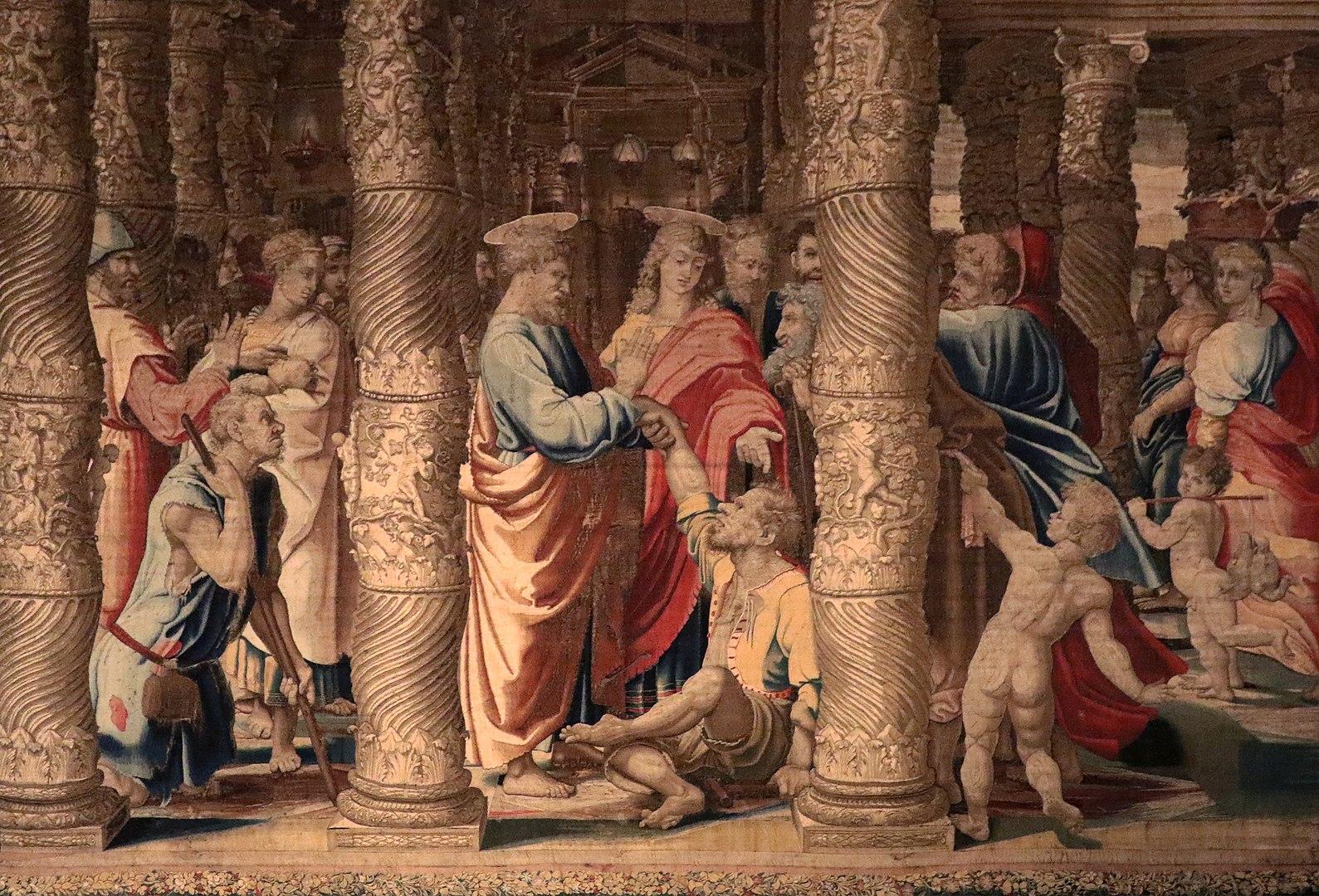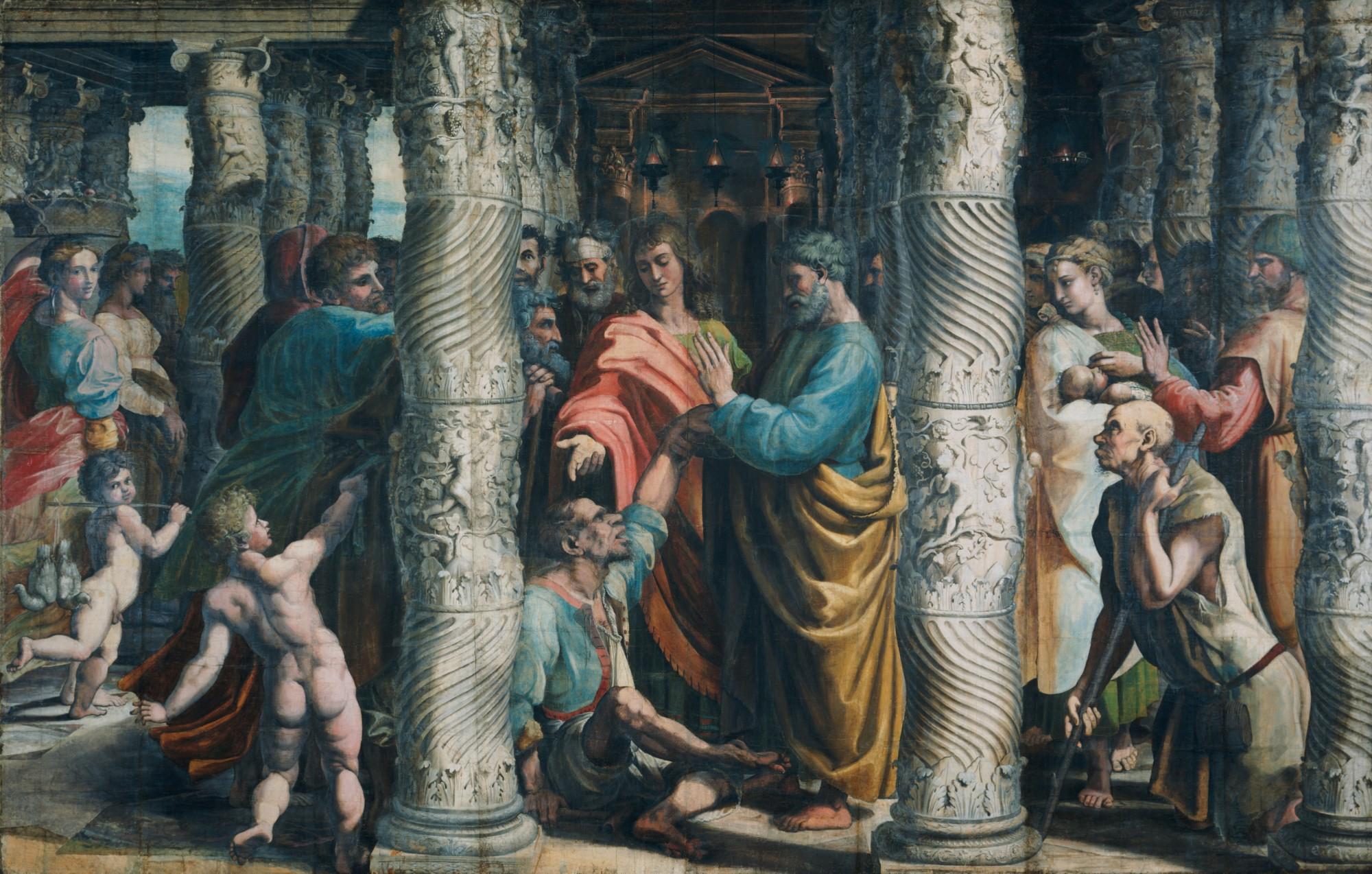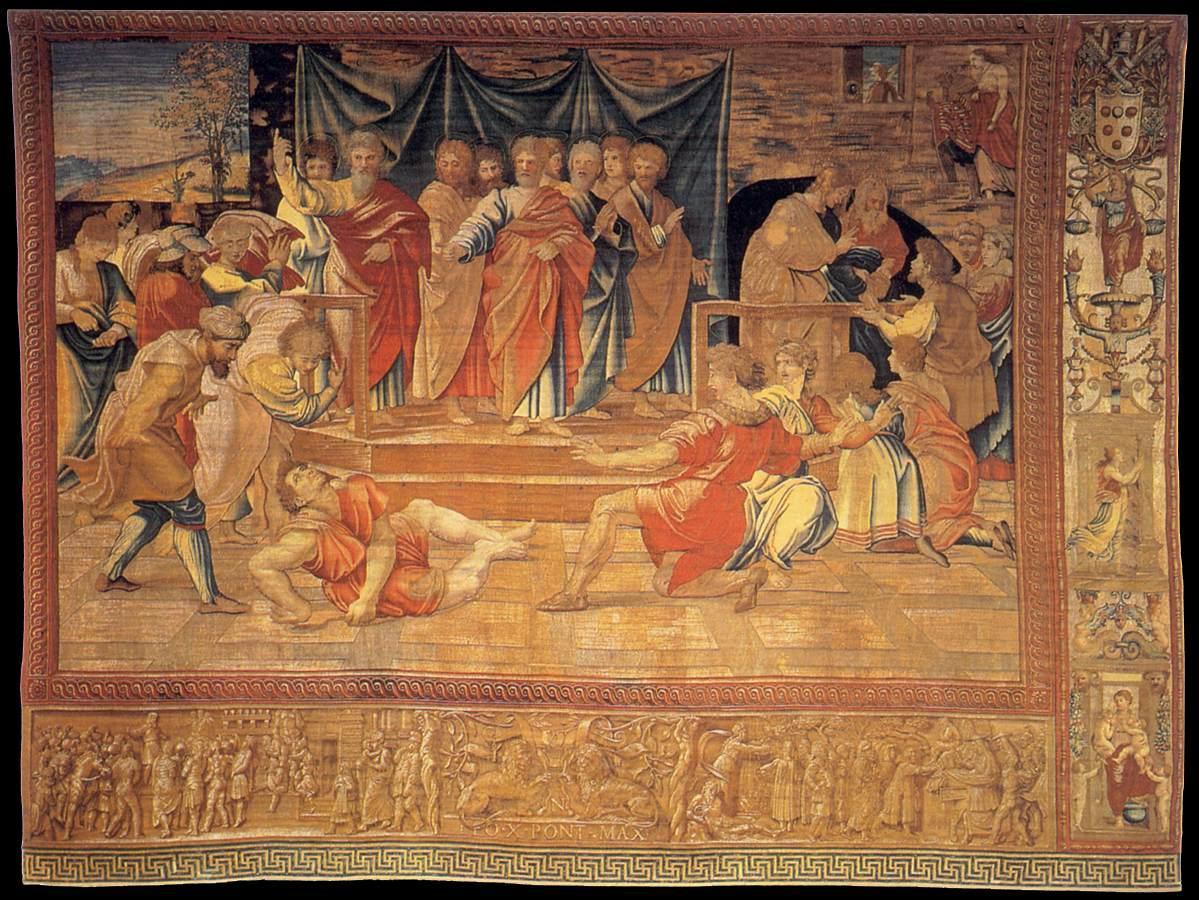The Sistine Chapel is one of the greatest treasures of Western art history, with Michelangelo’s incredible ceiling as the crowning jewel above works by 15th century masters, Botticelli, Perugino, Ghirlandaio and Signorelli. But one key element is usually missing from this hall: a series of massive tapestries designed by Raphael.

Raphael tapestry, The Healing of the Lame Man.
2020 marks the 500th anniversary of the death of Raphael, one of the greatest artists of the Renaissance and perhaps art history. Despite dying at only 37, Raphael (1483–1520) left a large body of work that was incredibly influential in his lifetime, and continues to inspire. This week, visitors to the Vatican in Rome have the rare opportunity to see some of his most prized and delicate works.

Raphael Cartoon, The Healing of the Lame Man (Acts 3, 1-8), 1515 - 16.

Raphael tapestry, The Death of Ananias (Acts 5: 1-5), 1515 - 16.
Commissioned by Pope Leo X, the tapestries depict the lives of St Peter and St Paul. Woven in silk using gold and silver threads in the Brussels workshop of master Peter Van Aelst, the ten tapestries measure nearly 20 by 16 feet. Because of the delicate nature of these 500-year-old textiles, they are usually on display in the nearby Raphael Rooms under protective glass. But for a brief week, they will be on display in all their glory in Sistine Chapel, without even the standard layer of glass between you and these legendary works of art.

Raphael Cartoon, The Death of Ananias (Acts 5: 1-5), 1515 - 16.
The paintings Raphael created as blueprints for the tapestries are known at the Raphael cartoons. Weavers cut the paintings into strips that would fit inside their looms so they could faithfully replicate the images in thread. Currently held by the Victoria & Albert Museum on loan from Her Majesty The Queen, they have been used to create other editions of the tapestries throughout the centuries.
Raphael himself may not have gotten to see the completed tapestries hanging in the Sistine Chapel before he died. Starting today and on view through Sunday, February 23, you will have this rare chance to see them together for the first time in the Sistine Chapel since the 16th century.






















![DEl Kathryn Barton [Australian b. 1972] the more than human love , 2025 Acrylic on French linen 78 3/4 x 137 3/4 inches 200 x 350 cm Framed dimensions: 79 7/8 x 139 inches 203 x 353 cm](/sites/default/files/styles/image_5_column/public/ab15211bartonthe-more-human-lovelg.jpg?itok=wW_Qrve3)



